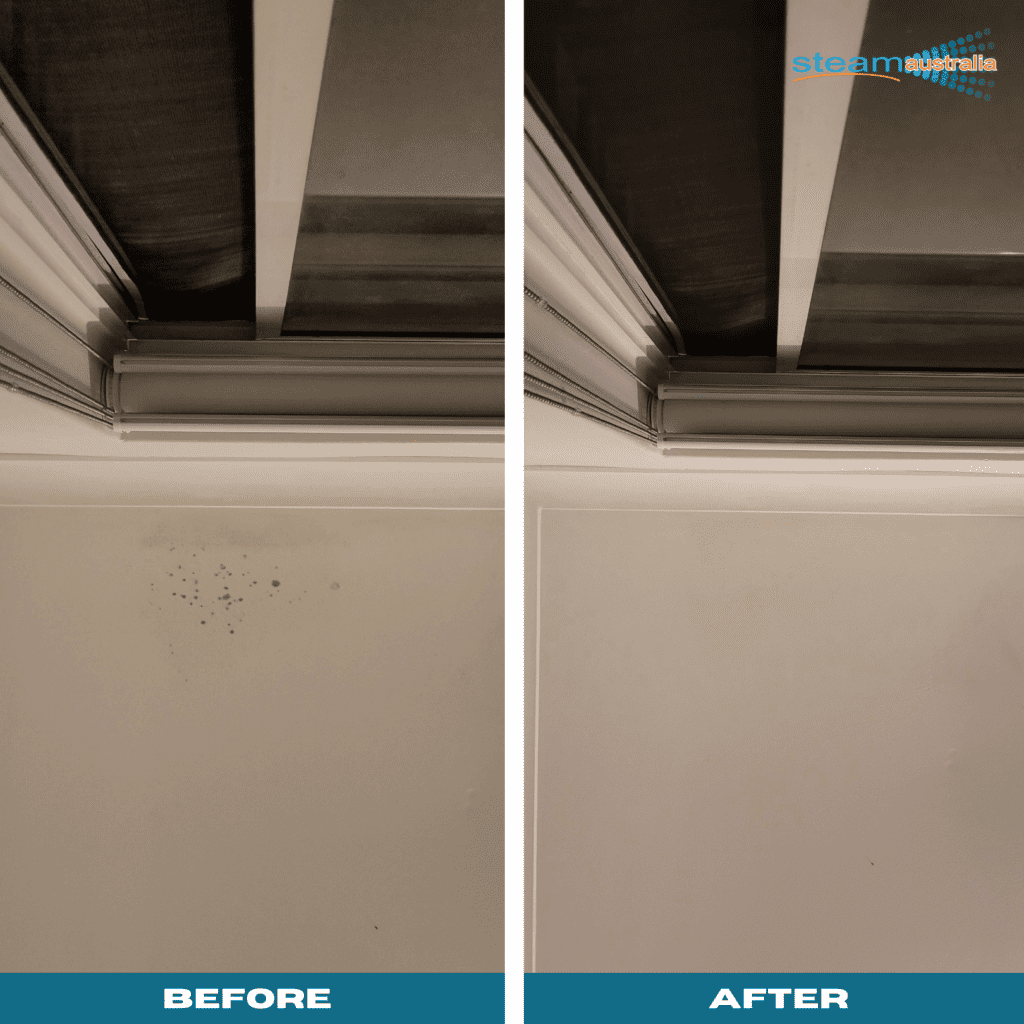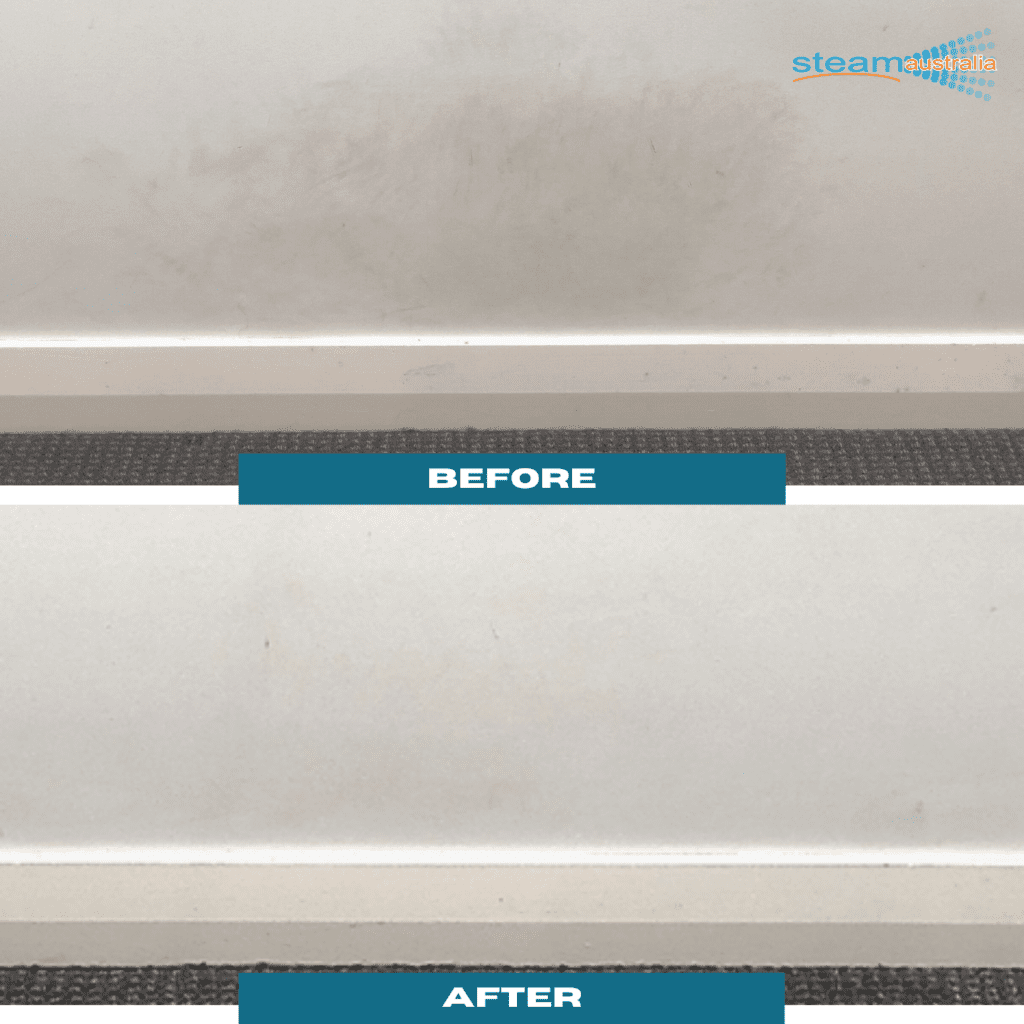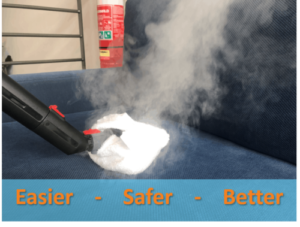Mould: Why am I getting it and how do I get rid of it!

What Is Mould?
Mould is a toxic fungi that can thrive unnoticed in cupboards and behind furniture, not to mention potentially the mattress you sleep on! The recent weather we have been experiencing has been affecting all types of surfaces around the home. In particular those made up of organic materials.
Mould releases spores that float through the air until they find the correct environment to grow into new colonies[1]. Damp, moist and humid environments are the perfect breeding ground for mould, mildew and bacteria to thrive. It is important to kill and remove mould as soon as you discover it and not to ignore the problem. Living in the same environment as mould can have some serious health detriments over time. To ensure you get ahead of an outbreak and stay in control it is important to action as soon as you discover even the smallest indication of mould.

“Some types of mould produce ‘mycotoxins’, which are very toxic to humans and can result in hay-fever like symptoms, respiratory illness and in the worst cases, inhibit the body’s immune system.” [2]
How can I kill Mould?
Most yeasts and moulds thrive in warm environments, but only to an extent. As they are heat-sensitive cells, they can be destroyed by heat treatments at temperatures of 60-71°[2]. By heating cells, the ‘membranes change in structure and their function of protecting the cell, becomes compromised’[3]. Therefore, with at least twelve seconds of steam vapor contact [4] cells take on too much heat, becoming damaged and can no longer survive. By introducing temperatures of over well over 100°, steam vapour facilitates the deactivation and “killing” of the bacteria. Steam sanitising is rapidly efficacious and provides an alternative to chemical cleans. Through shifting to chemical free cleaning methods, you can ensure the removal of unnecessary toxic household chemical exposure and also a dramatic reduction in chemical waste.
Dry steam sanitising kills up to 99.999% of bacteria and viral agents including mould and mildew and other allergen causing pathogens. Steam Australia machines produce dry steam at over 170°in the boiler, with a moisture content of only 5%. Due to this temperature alone, dry steam can effectively and efficiently kill mould, mould spores, dust mites and dust mite allergens [5]. When used in conjunction with high quality hospital grade disposable microfibre you can ensure the appropriate removal. Steam and microfibre are a hospital approved method of cleaning in killing and removing bacteria from a wide range of surfaces. In turn, steam sanitising hard and soft surfaces around your home or business will provide quicker and better results to keep your family and staff safe.
Chemical Clean vs Steam Clean?
Cane, wicker and rattan furniture are all on trend right now, but they are incredibly absorbent organic materials acting as a great canvas for mould to grow. Vinegar and clove oil are common home remedies for killing mould but they are time consuming processes with their own limitations. “Chemical disinfectants are widely used, but pose significant risks to humans, surfaces and the environment”. Moreover, in order to be affective, all chemical disinfectants must be strictly applied in accordance with manufacturers instructions [6].
For example, cleaning mould with bleach has been the go-to product for generations. When not applied correctly, bleach will simply remove the visible colour, leaving “the mould membrane underneath [is still] alive and strong. In turn, spurting out mould spores and mycotoxins” when you think you have removed the source [2].
What surfaces can I apply steam to kill mould?
How can I prevent mould from growing back?
Firstly, the most important step in ensuring mould does not grow back, is eliminating it correctly in the first place. By using dry steam to clean mouldy surfaces, you are killing the spores appropriately. This eliminates the risk of a colony reforming.
Secondly, airflow is very important to dry out humid environments and reduce moisture. Fans and air conditioning units are great at keeping air moving. Dehumidifiers are your ideal solution to continually take moisture out of the air to reduce relative humidity. Once you have mould present, you need to take appropriate action to kill and remove safely.
Dry Steam.
Easier, Safer, Better.
Join the Future of Cleaning, With Steam Australia
Get in touch today on 1300 79 50 50 or [email protected]























